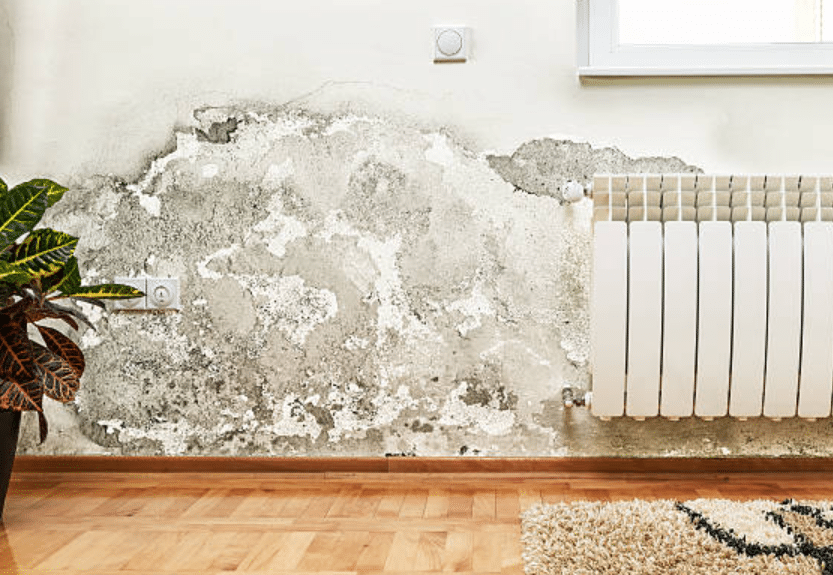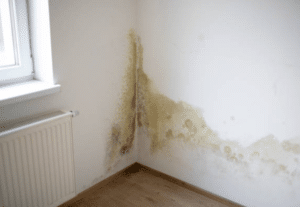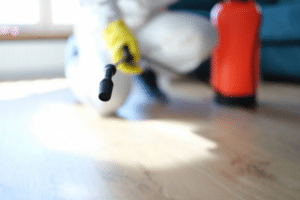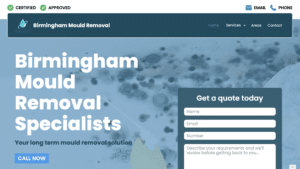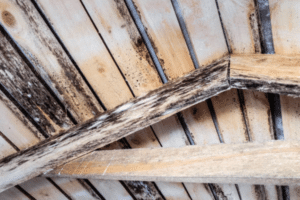Sunny days and climbing frames – that’s the image of perfect playtime. But what lurks unseen in damp corners and under swings?
Mould in play areas can pose a health risk to young children, their developing respiratory systems more susceptible to mould spores.
Ensuring a mould-free environment in your children’s play areas is crucial for their health and safety.
Exposure to mould can have serious health implications, making it imperative for parents, caregivers, and establishments to adopt safety measures for children and implement cleaning tips for play areas.
With the help of professionals like AirFresh Mould Removal London, creating a healthy environment for children and preventing mould growth becomes an achievable task.
We’ll guide you through identifying mould, understanding the potential health problems it can cause, and most importantly, removing it effectively.
We’ll help transform your backyard into a healthy haven where children can explore and flourish, free from hidden hazards.
Key Takeaways
- Understanding the risks of mould exposure and its impact on children’s health.
- Learning to identify signs of mould growth in outdoor and indoor play areas.
- Adopting preventative strategies to maintain a clean and healthy play environment.
- Recognising the importance of professional remediation and mould-resistant materials in combating mould infestations.
- Partnering with experts like AirFresh Mould Removal London for ensuring the safety of children’s play areas.
Understanding the Risks of Mould in Play Areas
Maintaining a mould-free environment in children’s play areas is crucial for their health, wellbeing, and safety.
It is essential to understand the risks of mould and how it can affect children’s health, as well as be aware of the different types of mould that can be found in playgrounds.
In this section, we will delve into the adverse health implications of mould exposure for children and explore the various mould species commonly encountered in play environments.
Mould in Play Areas Studies in UK
Playgrounds and backyards are supposed to be havens for carefree exploration. But mould lurking in these areas can cast a shadow on playtime. A study by the Asthma UK Centre for Applied Research found that over 70% of indoor play areas had detectable levels of mould spores, with some exceeding recommended safety limits.
This is concerning because young children are particularly vulnerable. Their developing respiratory systems are more susceptible to irritation caused by mould spores. Research published in the UK Journal of Occupational Medicine found a link between exposure to mould in childhood and increased risk of asthma and allergies.
The good news is that these risks can be mitigated. By being proactive about identifying and removing mould in play areas, we can create safer environments for our little ones.
Health Implications for Children
Mould exposure can negatively impact children’s health, particularly due to their developing immune systems and respiratory tracts. Some of the potential risks associated with mould in play areas include:
- Respiratory issues: Mould in the air can cause breathing problems, asthma, and other respiratory issues in children.
- Allergies: Allergic reactions can occur in sensitive individuals due to the presence of mould spores, resulting in symptoms like sneezing, itching, and skin rashes.
- Weakened immune system: Constant exposure to mould can weaken a child’s immune system, making them more prone to infections and various health problems.
Types of Mould Commonly Found in Play Environments
Several types of mould can be found in children’s play environments, each posing a different risk to their health. Some of the most common mould species include:
| Type of Mould | Health Risks |
|---|---|
| Aspergillus | Known to cause respiratory infections, asthma attacks, and allergic reactions. |
| Cladosporium | Can trigger allergic reactions and, in rare instances, infections of the skin and respiratory tract. |
| Penicillium | Often linked to allergic reactions, asthma, and other respiratory issues, especially in sensitive individuals. |
It is crucial to keep children’s play areas free from mould and create a healthy environment for them to engage in various activities and interactions with others.
Addressing the risks of mould and being aware of the potential dangers present in seemingly harmless spaces is essential in ensuring the wellbeing of young children.
Signs of Mould Growth in Outdoor and Indoor Play Spaces
It is vital to monitor children’s play areas for signs of mould growth, as timely identification can prevent adverse health effects and potential damage to the play equipment. We will guide you through the process of identifying mould in both outdoor and indoor play settings and highlight common areas where mould is likely to colonise.
Identifying Mould: What to Look For
When examining play spaces for signs of mould growth, there are some key indicators to be aware of:
- Discolouration: Mould can appear in various colours, such as black, green, or even white. It often presents as discoloured spots or patches on different surfaces.
- Musty odours: A strong, persistent musty smell can suggest mould presence, even if it is not visible to the naked eye.
- Moisture issues: Leaks, excess dampness, or signs of water damage may indicate the ideal conditions for mould growth.
By familiarising yourself with these signs, you can increase your chances of early mould detection and mitigation.
Common Areas for Mould Colonisation in Playgrounds
Mould thrives in warm, damp environments, which is why it is essential to pay extra attention to certain areas within play spaces:
- Shaded spots: Mould is more likely to grow in areas that receive limited sunlight, as they tend to retain moisture longer.
- Moist areas: Puddles, damp sand pits, and damp organic materials, such as wood chips or bark, can provide ideal conditions for mould proliferation.
- Poorly ventilated spaces: Indoor play areas, particularly those with limited ventilation, can foster mould growth due to insufficient airflow and increased humidity.
- Enclosed areas: Play equipment with hidden compartments or enclosed spaces may harbour mould growth due to lack of sunlight, limited air circulation, and moisture accumulation.
Incorporating regular inspections of these common areas for mould colonisation can increase your chances of identifying and preventing mould growth, thus contributing to the maintenance of a healthy and safe environment for children to play and explore.
Preventative Strategies for Mould in Play Areas
Implementing effective preventative strategies is essential in keeping play environments mould-free and ensuring children’s safety. The following measures, when consistently applied, can significantly reduce the likelihood of mould infestations in both indoor and outdoor play areas.
Regular Inspection and Cleaning: Conduct thorough visual inspections of play spaces, equipment, and surrounding areas to identify any signs of mould growth and potential problem spots. A strict cleaning routine should also be established, incorporating the use of mould-inhibiting solutions to prevent mould growth.
Mould-Resistant Materials: When designing and constructing play areas, opt for using materials that are less prone to mould growth. This includes certain types of plastics, metals, and treated woods that have been specifically developed for their resilience against mould.
Proper Ventilation: Ensuring that play areas are well-ventilated is key in promoting airflow and reducing humidity, thus limiting the conditions that are favourable for mould growth. Installing adequate ventilation systems or utilising natural ventilation methods will help keep play environments healthy and mould-free.
Timely Maintenance and Repairs: Regular maintenance routines should include checking for water damage, leaks, and drainage issues that might encourage mould growth. Undertaking prompt repairs and maintenance can significantly reduce the risk of mould infestations developing.
Here are some practical maintenance tips to prevent mould in play areas:
| Maintenance Tip | Reason | Action |
|---|---|---|
| Ensure proper drainage | Clogged drains can lead to water accumulation, creating favourable conditions for mould growth. | Regularly clear debris from gutters, downspouts, and drainage grates to ensure the smooth flow of water away from the play area. |
| Prune overhanging trees or vegetation | Excessive shade can cause moisture to linger and contribute to mould growth. | Strategically trim branches, hedges, and other overgrown vegetation to ensure ample sunlight reaches the play area and encourages quicker evaporation of moisture. |
| Monitor and control humidity levels | High humidity is a significant factor in encouraging mould growth. | Periodically check humidity in indoor play spaces, and take measures to reduce it if it exceeds 60%. This can include the use of dehumidifiers or air conditioners to maintain appropriate humidity levels. |
By diligently applying these mould prevention for outdoor play areas and indoor play spaces, you can create a healthy and safe environment for children to enjoy.
Remember that prevention is always better than cure; therefore, investing time and effort into consistent upkeep and maintenance will go a long way in avoiding mould-related issues in children’s play areas.
Mould in Play Areas: Key Reasons for Professional Remediation
While keeping children’s play areas free from mould is essential for ensuring the safety and well-being of young users, it is crucial to consider professional remediation for effective and long-lasting results. Let’s explore the importance of specialist cleaning, the risks associated with DIY cleaning, and the benefits of entrusting mould removal to experts such as AirFresh Mould Removal London.
Importance of Specialist Cleaning
When it comes to dealing with mould problems in play areas, the expertise offered by professional mould cleaning services cannot be underestimated.
Specialists in mould removal are experienced in identifying the type and extent of mould infestations, ensuring proper measures are taken for complete remediation.
Moreover, employing a professional mould cleaning service guarantees the use of industry-approved techniques and equipment, which substantially reduces the risk of mould recurrence.
Why DIY Cleaning Attempts Can Be Harmful
While many individuals may consider taking matters into their own hands for mould removal, attempting DIY cleaning can often aggravate the situation.
Not only is there a high probability of spreading mould spores during an unguided cleaning effort, but amateur attempts can also expose the person attempting the clean-up to potential health risks.
Furthermore, unsuitable cleaning products and techniques can deteriorate the surface and even cause more damage to the play area equipment.
Therefore, it is essential to understand that the importance of specialist cleaning far outweighs the potential harm caused by ill-informed DIY cleaning attempts.
Enlisting the help of professional remediation experts such as AirFresh Mould Removal London is crucial for safe and effective mould removal and cleaning in play areas.
By trusting specialist cleaning services, you can ensure that mould issues are addressed efficiently, prioritising the health and safety of children who visit these spaces.
Mould-Resistant Materials and Design for Playgrounds
Creating a safe and sustainable play area for children involves careful consideration of suitable mould-resistant materials and playground design. Selecting the right surfaces and materials can hinder mould growth in play areas.
Next, we’ll provide guidance on choosing mould-resistant play surfaces, materials, and effective maintenance tips to keep mould at bay.
Choosing the Right Surfaces
Incorporating mould-resistant play surfaces is a key factor in preventing mould growth. Materials such as metals, plastics, and certain treated woods are less prone to mould infestation, making them suitable choices for play area surfaces.
For outdoor playgrounds, consider permeable surfaces that can quickly dry, preventing the buildup of moisture that could facilitate mould growth. Furthermore, prioritise good drainage systems in the playground design to reduce moisture retention in play area surfaces.
Maintenance Tips to Keep Mould at Bay
Regular and diligent maintenance practices contribute significantly to the prevention of mould in play areas. Here are some practical tips for effective maintenance:
- Inspect play equipment for any signs of mould, paying close attention to frequently damp areas or those with poor ventilation.
- Ensure timely repairs if signs of mould are detected to prevent further spread.
- Regularly clean surfaces using mould-resistant cleaning solutions to eliminate potential sources of mould growth.
- Trim overhanging foliage near play areas to improve sunlight penetration and reduce shade, minimising moisture retention.
- Monitor humidity levels in indoor play spaces and employ a dehumidifier, if necessary, to promote a dry environment in which mould struggles to thrive.
By implementing these preventive measures, you can effectively minimise the risk of mould infestation and ensure a healthy play environment is maintained for the well-being of the children.
When to Call a Mould Removal Service
Addressing mould issues in a timely manner is crucial to maintaining the safety of children’s play areas.
Knowing when to call a mould removal service can help to prevent further health risks and ensure that the affected area is cleared of mould effectively. Let’s look into various signs that it may be time to contact a mould expert such as AirFresh Mould Removal London.
First and foremost, it is essential to call a mould specialist when there is any visible sign of mould in a play area. This may include discoloured spots or patches, black or green growths, or a persistent musty odour. Ignoring these signs can lead to an increase in potential health risks for children.
Another indication that it’s time to involve a mould remediation service is when you are unsure of the extent of the mould problem. A mould removal professional can assess the situation and determine the most effective course of action to eradicate mould infestations.
Health risks associated with mould presence: If any child has experienced symptoms such as coughing, wheezing, skin rashes or runny noses, which could be related to mould exposure, it is essential to contact a mould removal service promptly.
Extensive mould growth: If mould has infested a large area or multiple sections in a play environment, it is necessary to call in a mould removal service to tackle the issue properly and avoid further spread of mould spores.
Unsuccessful DIY efforts: If you have attempted to remove mould growth yourself but it returns or spreads, seeking professional assistance is necessary to ensure the complete and safe eradication of mould without risking further contamination or exposure.
It is vital to remain vigilant in identifying signs of mould growth and be proactive in contacting a mould removal service as soon as potential issues arise.
By enlisting the help of professionals like AirFresh Mould Removal London, you can ensure a safe, hygienic and mould-free play environment for children.
Conclusion
The importance of addressing mould concerns in children’s play areas cannot be understated, as it significantly impacts their well-being and safety. Preventative strategies and timely remediation are vital in ensuring a healthy environment in which children can play without facing health risks.
Collaborating with mould removal experts can provide effective solutions for dealing with mould in play areas, and specialists like AirFresh Mould Removal London are committed to safeguarding play areas against the threat of mould.
Ensuring the Safety of Children’s Play Areas
Taking proactive measures to create a mould-free environment in children’s play areas is essential in maintaining their safety.
Regular inspections, cleaning routines, and using mould-resistant materials will help prevent mould growth. When confronted with mould issues, seeking professional assistance from mould removal experts becomes a necessity to protect the health of the children using the play areas.
Partnering with Experts for a Mould-Free Environment
By partnering with mould removal experts, you will benefit from their knowledge, expertise, and advanced tools, ensuring a comprehensive and effective mould remediation process.
This partnership not only guarantees a mould-free environment for children to play in but also reinforces the importance of upkeeping safety standards in children’s play areas.
With dedicated professionals like AirFresh Mould Removal London, you can be confident in maintaining hygienic and mould-free play spaces for children to enjoy without compromising their health.
FAQ
What are the health implications of mould exposure for children?
Mould exposure can lead to various health issues in children, including respiratory problems, allergies, asthma exacerbations, and skin or eye irritations. Young children, in particular, have developing immune systems that make them more susceptible to the harmful effects of mould.
How do I identify mould in play areas?
Mould growth in play areas can manifest as discolouration, fuzzy or slimy patches, and musty odours. Frequently check playground equipment and play surfaces for any signs of mould, especially in shaded, moist spots or areas with poor ventilation.
Which preventative strategies can help combat mould growth in play areas?
Some effective preventative strategies include regular inspection and cleaning of play areas, using mould-resistant materials and surfaces, ensuring proper ventilation, and maintaining a timely repair and maintenance schedule. These methods can help reduce the likelihood of mould infestations in play areas.
Why should I consider professional mould remediation for play areas instead of DIY cleaning?
Professional mould remediation services, such as AirFresh Mould Removal London, possess the expertise and equipment necessary to safely and effectively remove mould. DIY cleaning methods might spread mould spores, exacerbating the problem and potentially posing health risks to children.
How can mould-resistant materials and surfaces benefit play areas?
Mould-resistant materials, such as certain plastics, metals, or treated woods, can help reduce the risk of mould growth in play areas. These materials can support the longevity of playground structures and contribute to a sustainable, healthy environment for children to enjoy.
When should I call a professional mould removal service?
Contact a professional mould removal service like AirFresh Mould Removal London when mould growth becomes extensive, poses health risks to children, or persists despite your efforts to eradicate it. Specialist services can ensure complete and safe mould removal without the risk of further contamination or exposure to children.
Don’t Let Mould Steal Playtime!
Keeping your play area mould-free is crucial for your children’s health. While this blog post has equipped you with valuable knowledge, some mould situations require a professional touch.
Here’s when to call in the experts:
- Extensive mould growth (larger than a square metre)
- Mould on porous surfaces like wood or fabric
- Difficulty identifying the type of mould
- Persistent mould after repeated cleaning attempts
Our team of certified mould removal specialists understands the unique challenges of play area decontamination. We use safe, effective methods to eliminate mould and prevent its return.
Protect your children’s health and peace of mind. Call us today at 0203 130 4068 for a free consultation. Let’s create a healthy, mould-free environment where playtime can thrive!

